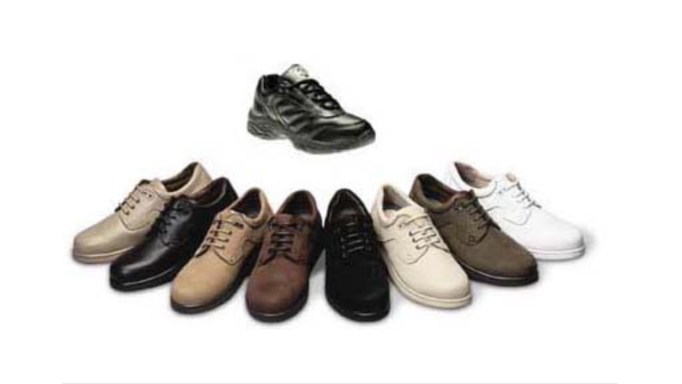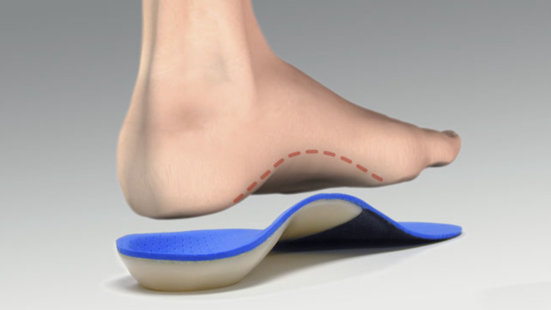Items filtered by date: December 2014
University of Nottingham Study Finds Ingrown Toenails Associated with Over Grooming
 A recent study conducted at the University of Nottingham found that trimming nails too often may actually lead to certain nail problems including ingrown toenails. After examining how the nails stick to the nail bed and grow forward, researchers found that cutting the nails daily puts a certain force on the nail that can make nails grow too slow or too fast as well as causing additional problems.
A recent study conducted at the University of Nottingham found that trimming nails too often may actually lead to certain nail problems including ingrown toenails. After examining how the nails stick to the nail bed and grow forward, researchers found that cutting the nails daily puts a certain force on the nail that can make nails grow too slow or too fast as well as causing additional problems.
Lead study author, Cynthia Rauch, also used the research to find ways to avoid ingrown nail problems. She states, “Looking at our results, we suggest that nail beauty fanatics who trim their nails on a daily basis opt for straight or parabolic edges, as otherwise they may amplify the imbalance of stresses which could lead to a number of serious conditions.”
Ingrown toenails are terribly uncomfortable, and in the worst cases surgery might be required to get rid of them. If you think you have an ingrown toenail, consult with one of our podiatrists of Pennsylvania. Our doctors will confirm your diagnosis and do everything she can to treat your problem.
Ingrown Toenails Causes
Ingrown toenails occur when a toenail grows sideways into the bed of the nail, causing pain, swelling, and possibly infection.
There are a number of risk factors for ingrown toenails. Some include cutting your nails too short, participating in strenuous sports, diabetes, obesity, and fungal infection. Some are genetically predisposed to ingrown nails, although wearing ill-fitting or damp shoes can exacerbate the problem.
Treatment
There are a number of steps you can take to treat ingrown nails:
-Let your toenails grow out
-Soak the toes in hot water with antibiotic soap or Epsom salts
-Placing a piece of cotton under the affected nail may allow the toe to grow up instead of into the nail bed
-Rest with your feet up
If however, your pain is severe, or you see red streaks running up your leg, you should see a podiatrist. Your podiatrist may make a small incision and remove part of the toe nail to relieve the pressure. A local anesthetic may be used to lessen the discomfort of the operation. Topical medication may also be prescribed to prevent the regrowth of the problem nail.
If you have any questions, feel free to contact one of our offices located in Plymouth Meeting and Ambler, PA. We offer the latest in diagnostic and treatment technologies to meet all your needs.
Read more about Ingrown Toenails
Stratford Festival supplies Dancers with Custom-Sized Shoes
 At the annually-held Stratford Festival, 1000 pairs of shoes are made each year by its various shoemakers. These specially made shoes are created for the many actors and dancers performing in multiple productions staged by the theater at the festival. Customized specifications are often requested by Stratford performers, as professional dancing tends to be rather athletically demanding on the feet.
At the annually-held Stratford Festival, 1000 pairs of shoes are made each year by its various shoemakers. These specially made shoes are created for the many actors and dancers performing in multiple productions staged by the theater at the festival. Customized specifications are often requested by Stratford performers, as professional dancing tends to be rather athletically demanding on the feet.
Several of the tap dancers performing in the theater’s upcoming production of Crazy for You requested an alteration in shoe size to allow a certain amount of toe room. The experienced shoe staff readily meets these requests, either altering the shoes themselves or having them done off-site. “It makes a difference as to how you perform, especially with tap dancing,” said Kerry Gage, associate choreographer of Crazy for You. “Everybody’s feet are entirely different.”
Wearing the proper shoe size is pertinent for dancers and other people who are always on their feet. If you require assistance in selecting proper-fitting footwear, see podiatrists Dr. Michael Newman and Dr. Denise Kohler of Pennsylvania. Our doctors can attend to any of your foot and ankle needs.
Getting the Right Shoe Size
Sometimes it may be difficult finding the right shoe size especially because shoe sizes tend to vary depending on the brand and company you are looking for. A size 6 for one brand may be a size 7 in another. Although many people know their exact shoe size, it can range within 2 sizes depending on where they shop.
So it is important not to always go for a size 7 just because you think you might be a size 7 universally. It is best to try on the shoe and walk around for a bit to see how it fits and how it feels. Comfort is essential and the fitting has to be well otherwise it can lead to blisters, bruises at the back of the ankle and it can also hurt your toes if the shoe is too tight for example.
People walk a lot, so it is important for you to find what is comfortable when it is possible.
For more information about Getting the Right Shoe Size, follow the link below.
If you have any questions, please feel free to contact our offices located in Plymouth Meeting and Ambler, PA. We offer the newest diagnostic and treatment technologies for all your foot care needs.
Read more about Getting the Right Shoe Size
Scientists of the University of Calgary Study Running Shoes
 University of Calgary scientists want to build the perfect running shoe through studying the effects of comfort and its effect on the rates of injury. Even though the idea of the perfect running shoe has circulated for years, modern schools of thought claim that shoe design has no effect on the rate in which running injuries occur.
University of Calgary scientists want to build the perfect running shoe through studying the effects of comfort and its effect on the rates of injury. Even though the idea of the perfect running shoe has circulated for years, modern schools of thought claim that shoe design has no effect on the rate in which running injuries occur.
Advocates of the ‘comfort theory’ suggest that people should just go with the pair of running footwear that feels best for them. The scientific team still wants willing participants for their study, hoping to learn more through research.
For help with selecting an appropriate shoe size, consult with podiatrist Dr. Michael Newman of Pennsylvania. Dr. Newman can measure your feet to determine what your needs are and help you find an appropriate pair of footwear.
Getting the Right Shoe Size
Sometimes it may be difficult finding the right shoe size especially because shoe sizes tend to vary depending on the brand and company you are looking for. A size 6 for one brand may be a size 7 in another. Although many people know their exact shoe size, it can range within 2 sizes depending on where they shop.
So it is important not to always go for a size 7 just because you think you might be a size 7 universally. It is best to try on the shoe and walk around for a bit to see how it fits and how it feels. Comfort is essential and the fitting has to be well otherwise it can lead to blisters, bruises at the back of the ankle and it can also hurt your toes if the shoe is too tight for example.
People walk a lot, so it is important for you to find what is comfortable when it is possible
For more information about Getting the Right Shoe Size, follow the link below.
If you have any questions, please feel free to contact one of our offices in Media and Ambler, PA. We offer the newest diagnostic and treatment technologies for all your foot care needs.
Read more about Choosing the Right Running Shoes
Foot Pain relievable for the Elderly with Extra-depth Footwear
 According to a new study, adults over the age of 65 who were fitted for new extra-depth shoes experienced reduced pain and improved function. While extra-depth footwear is often marketed for people with diabetic foot conditions, lead author Hylton B. Menz stated that the structure and function of the foot changes greatly with age regardless of diabetic status. “With advancing age, there is a general tendency for the foot to exhibit increased soft tissue stiffness, decreased range of motion, decreased strength, and a more pronated posture,” said Menz. Many of the elderly also do not wear proper fitting shoes that accommodate to the changed shape of the feet. Those in the study wearing extra-depth footwear were more likely to report their foot pain had moderately or markedly improved and developed fewer podiatric skin conditions than the comparison group.
According to a new study, adults over the age of 65 who were fitted for new extra-depth shoes experienced reduced pain and improved function. While extra-depth footwear is often marketed for people with diabetic foot conditions, lead author Hylton B. Menz stated that the structure and function of the foot changes greatly with age regardless of diabetic status. “With advancing age, there is a general tendency for the foot to exhibit increased soft tissue stiffness, decreased range of motion, decreased strength, and a more pronated posture,” said Menz. Many of the elderly also do not wear proper fitting shoes that accommodate to the changed shape of the feet. Those in the study wearing extra-depth footwear were more likely to report their foot pain had moderately or markedly improved and developed fewer podiatric skin conditions than the comparison group.
Maintaining proper foot care is essential for the older adult. For more information about foot care for the elderly, consult with podiatrists Dr. Michael Newman and Dr. Denise Kohler of Pennsylvania. Our doctors will assist you with all of your foot and ankle concerns and provide you with quality treatment.
The Elderly and their Feet
As we age we start to notice many changes in our body, but the elder population may not notice them right away. Medical conditions may prevent the elderly to take notice of their foot health right away. Poor vision is a lead contributor to not taking action for the elderly.
Common Conditions
Neuropathy – can reduce feeling in the feet, and can hide many life threating medical conditions.
Reduced flexibility – prevents the ability of proper toenail trimming, and foot cleaning. If left untreated, it may lead to further medical issues.
Foot sores – amongst the older population can be serious before they are discovered. Some of the problematic conditions they may face are:
Gouging toenails affecting nearby toe
Shoes that don’t fit properly
Pressure sores
Loss of circulation in legs & feet
Edema & swelling of feet and ankles
Susceptible Infections
Diabetes and poor circulation can cause general loss of sensitivity over the years, turning a simple cut into a serious issue.
For more information about Elderly and Feet, follow the link below.
If you have any questions please feel free to contact one of our offices located in Ambler and Plymouth Meeting, PA. We offer the latest in diagnostic and treatment technology to meet your needs.
Read more about Elderly and Feet
